Yesterday I posted a single photo out of a series of photos I took of an immature Ferruginous Hawk two days ago in the west desert. In that post I said I’d be posting more of them very soon. These are those photos.
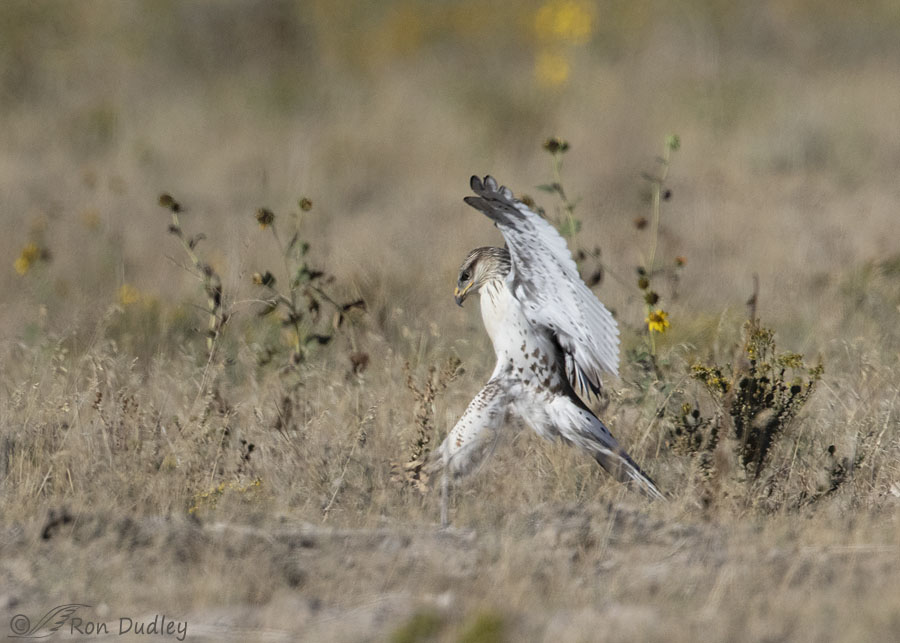
This Ferruginous Hawk was hunting from a fence post along a dirt road as I approached it. Before I could get anywhere near ‘him’ he took off after potential prey that he’d spotted in the dried grasses about 150 yards to the south of the road I was on. I watched him through my lens as he flew toward whatever he’d spotted and even though he was tiny in my viewfinder I couldn’t resist firing off a few shots as he was landing.
He failed to catch anything and after a short time he…
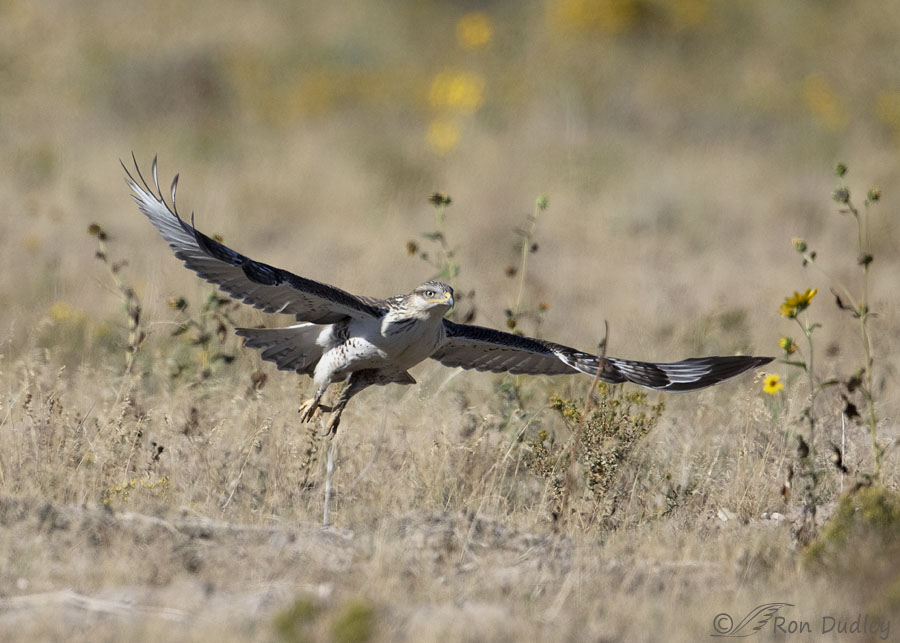
flew back to the fence line he’d been hunting from and…
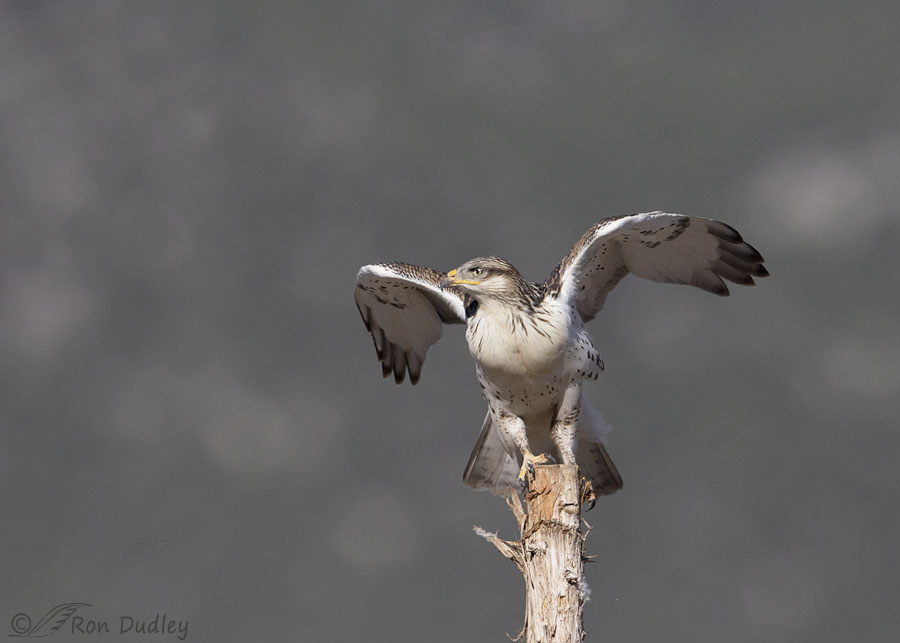
1/4000, f/6.3, ISO 500, Canon 7D Mark II, Canon EF 500mm f/4L IS II USM + EF 1.4 III Extender, not baited, set up or called in
landed on a different fence post west of the post he’d been hunting from earlier. This time he allowed me to get close enough for takeoff and flight shots when he took off after prey again (something I’d seen him do several times as I slowly approached him from far away).
When he landed on this post he was facing to my right but he soon spotted potential prey behind him so here he’s twisting on his perch to go after it.
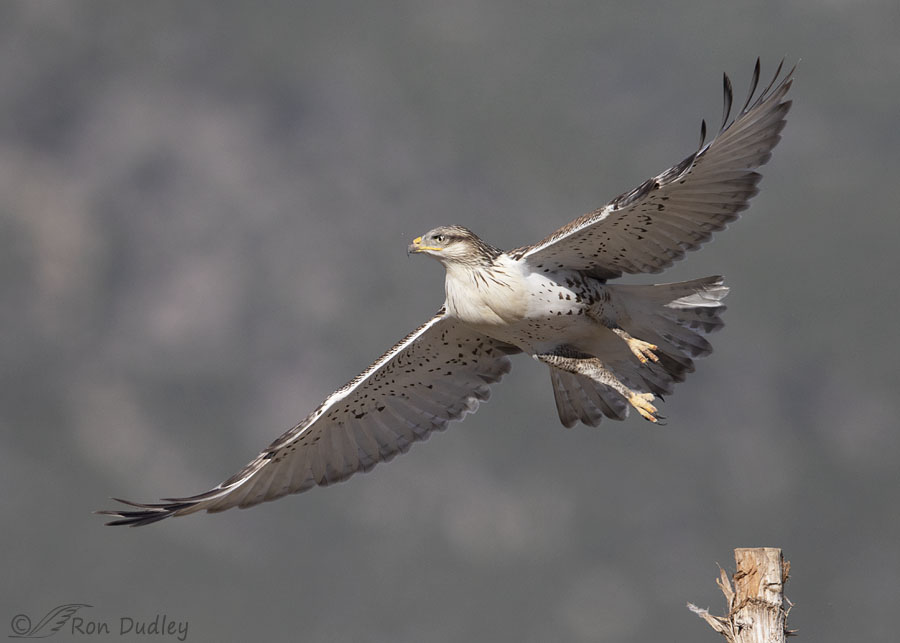
1/4000, f/6.3, ISO 500, Canon 7D Mark II, Canon EF 500mm f/4L IS II USM + EF 1.4 III Extender, not baited, set up or called in
This photo, taken immediately after he left the fence post, is one of my two favorites of the series.
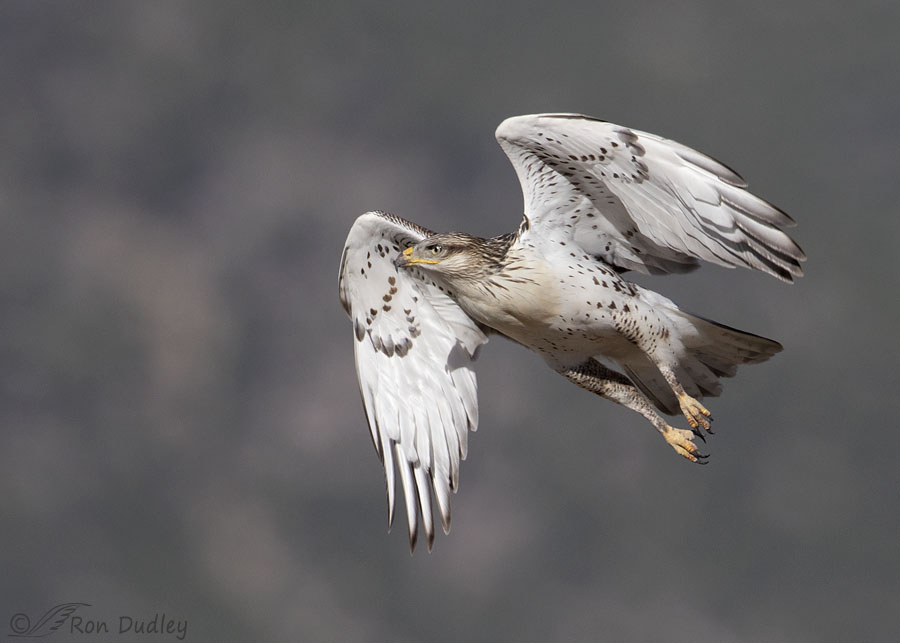
1/4000, f/6.3, ISO 500, Canon 7D Mark II, Canon EF 500mm f/4L IS II USM + EF 1.4 III Extender, not baited, set up or called in
He gained elevation quickly, more quickly than I expected him to (especially for such a large, heavy bird), so I clipped wings in several of the photos of the series but got lucky with this one.
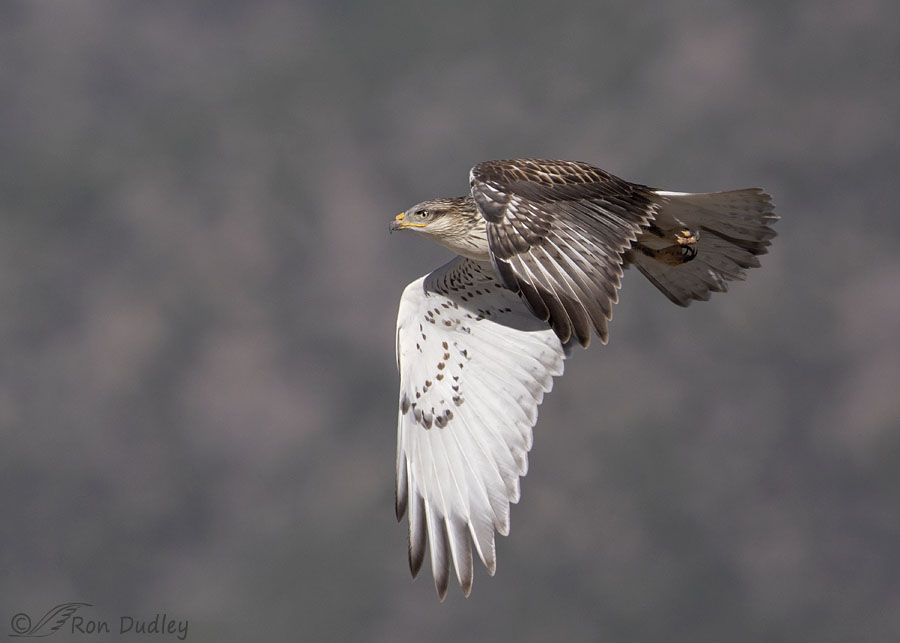
1/4000, f/6.3, ISO 500, Canon 7D Mark II, Canon EF 500mm f/4L IS II USM + EF 1.4 III Extender, not baited, set up or called in
Now he’s beginning to level out and build up speed.
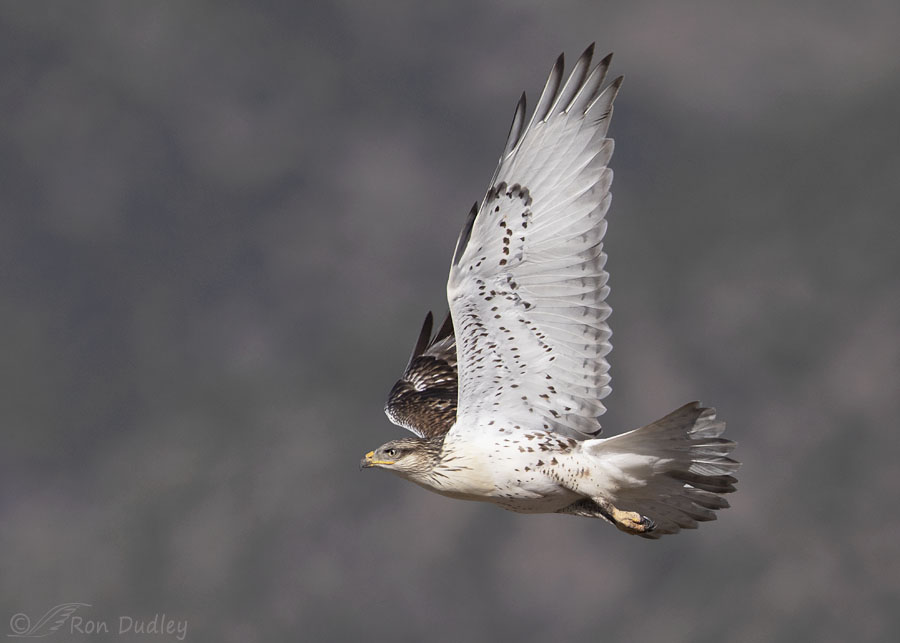
1/4000, f/6.3, ISO 500, Canon 7D Mark II, Canon EF 500mm f/4L IS II USM + EF 1.4 III Extender, not baited, set up or called in
This is the photo I posted yesterday but for the sake of continuity I decided to include it again.
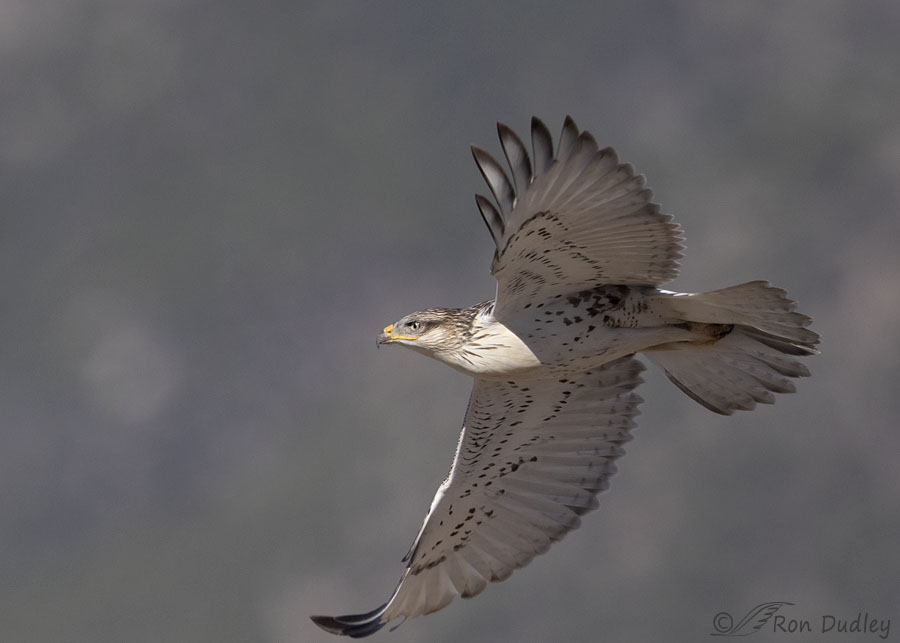
1/5000, f/6.3, ISO 500, Canon 7D Mark II, Canon EF 500mm f/4L IS II USM + EF 1.4 III Extender, not baited, set up or called in
You can’t come much closer than this to clipping a wing without actually doing it. I like the way he’s tucked his legs up so tightly against his tail.
I got quite a few more shots of this hawk in flight but I clipped body parts in many of them and after this photo was taken he appeared to abandon his attempt at prey and turned away from me. He made a long, sweeping turn and returned to the fence line to hunt again. But this time a noisy pickup pulling a horse trailer came up from behind me and spooked the hawk. Bad timing but at least I got this series before that incredibly noisy and dusty contraption came along.
Overall I’m quite happy with this series, especially photos #4 and #7. Having morning light on the bird and the dark mountains in the background was a bonus.
Ron
Note:
I screwed up one potentially excellent photo in the series so badly I originally decided to leave it out. But at the last minute I changed my mind because I know that many of my blog followers are fellow bird photographers and I thought including the photo and explaining what happened might prevent other photographers from making the same mistake I did.
Ferruginous Hawks are our largest heaviest hawks so when this one took off I expected him to launch pretty close to horizontally rather than attempting to gain elevation quickly. When this species takes off from elevated perches that’s what they usually do.
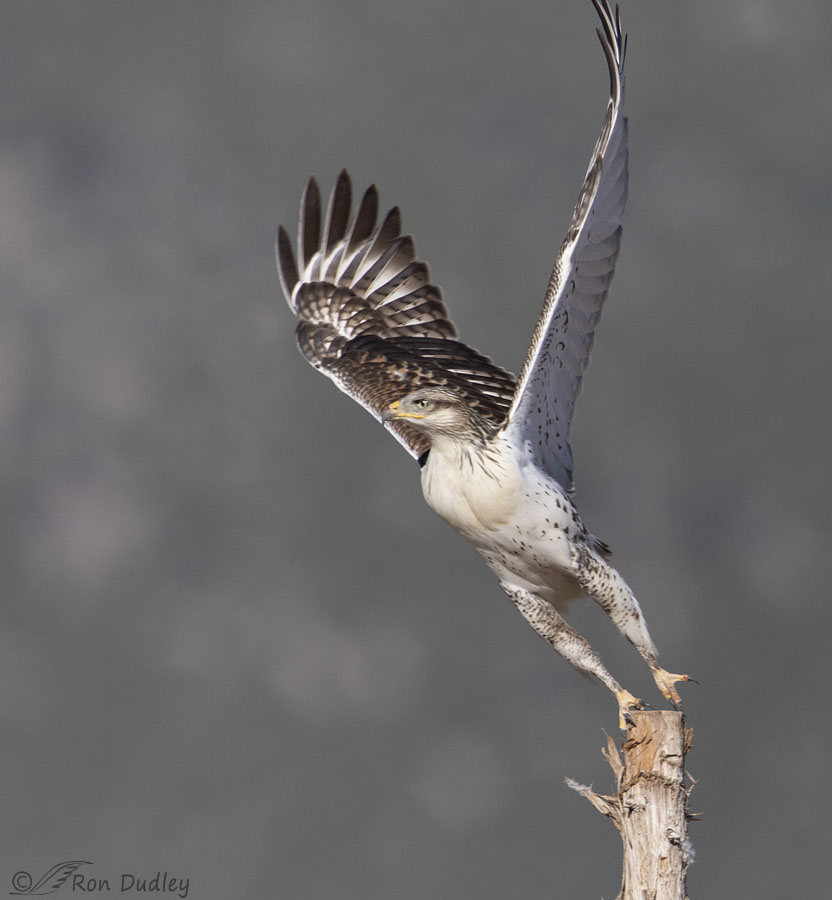
But when this guy launched he took off at a steeper angle than I expected him to (that steeper angle is more apparent in photos #4 and #5 than it is in this one). So in order to compensate, and hopefully keep him in frame during and immediately after takeoff, I instinctively and reflexively jerked my lens upward while this shot was being taken which resulted in terrible “long lens technique” and a soft bird. And it didn’t keep me from clipping his wing anyway.
For obvious reasons this photo will end up in the trash bin.
After nearly 14 years of photographing birds I still occasionally jerk my lens in unexpected situations like this. For me it’s been a surprisingly hard habit to break.


Wow! Thanks for a morning lift!
Outstanding!!
Awesome series Ron, thanks for sharing!
Charlotte Norton
Thanks, Charlotte.
I agree with all the comments and I’ll just add, These last two days pictures are certainly among your best ever and my favorites. What a beautiful Hawk!!
Nice of you to say so, Ernest. Thank you.
This series honestly gave me goosebumps. Yesterday’s appetizer and today the main course…😁 What a gift you have❗️
Thank you for the very kind words, Diana.
It is a majestic bird and you really captured some great images. Very engaging description of its activities.
Thank you on both counts, Kenneth.
I love this series. I see that the dots on the chest MIGHT make a bird shape when the wings are right. I am now torn about that whole thing. 😀
Thank you, Arwen. It’s all a matter of perspective I guess.
Oooh and ahhh.
I love them all (and mourn with and for you about the last).
The first shot where he is apparently applying the brakes (hard) particularly appeals to me. And britches.
Yup, those are air brakes EC.
By the way, I thought of you this morning when I discovered that “gruntled” is an actual word… 🙂
grun·tled
/ˈɡrən(t)ld/
adjective
pleased, satisfied, and contented.
Of course it is a word. And anti onomatopeic word which is used much less than its opposite. Or hear at least – which might tell you that the grumpy old woman label fits well.
I don’t remember ever hearing or seeing it used.
I use it on occasion. But rarely. Very, very rarely.
Earlier commenters have covered all the bases (and then some), so I’ll just add some “oohs” and “ahhs” and another VBG for this truly wonderful series, a worthy follow-up to yesterday’s teaser. But I must confess that I love #9, even with its “flaws.” That raptor’s beauty, power and grace are undeniable, even with a few clipped tips. Sigh.
Thank you, Chris. In that last shot I could live with the “clipped tip” but I can’t with the softness.
This is a pretty danged spectacular series, Ron! Even the last shot with the softer bird and clipped wing makes me ooh and ahh. I also think it was very considerate of the hawk to curve those right primaries in shot #8. 😉
I can’t decide which shot I like the best — they are all incredibly special. I definitely like the first “attack” shot and am sorry he came up empty. The second shot really shows how hard he has to work to get some lift coming off the ground. The leading edges of his wings are really curved; looks like he’s got those wrists almost fully rotated. The pops of color from the sunflowers provides the cherry on top of those shots. The interplay between the morning light on the bird and the dark background enhances all of the subsequent shots for me as well. As Dick would say, VBG! 😀
“I also think it was very considerate of the hawk to curve those right primaries in shot #8”
I never thought of it that way but you’re absolutely right, Marty. If he hadn’t I’d have clipped his wing!
A day like this makes up for all those days we’re skunked.
It sure helps, John.
Love this series Ron! Very happy the fence post is wood and not metal! Love the backgrounds! The third shot is my fave – love the hawk’s face.
So am I, Kathleen. That fence is a mix of wooden and metal posts so this time I just got lucky.
At the risk of sounding a bit sacrilegious the soft images and clipped wings, combined with your commentary, can be as engrossing to this reader as your “perfect” shots.
Love the last 9th inning stretch.
Lyle, I guess everything, good and bad, combine to tell an interesting story. Thank you.
Outstanding series. 4,5,6, and 7 are my favorites. What a beautiful raptor. You are so skilled at following birds after take off – something I really struggle with. I hope all your followers realize just how difficult it is to follow a bird launching itself from a post or tree and then keeping it in frame and sharp.
I salute Frances for asking a question about something she did not understand.
Can you give us a picture of where you are taking these photos from? I was trying to picture the fence line where you were parked and where the incredibly dusty and noisy contraption came along.
“something I really struggle with”
Believe me, I struggle with it too Everett. For this series I got about as many clipped shots as unclipped shots.
I don’t have an actual “picture” to share.
I was on a dirt/gravel road going west toward the base of some mountains not far away. I had parked with my pickup blocking the road so I could shoot from my pickup because the hawk was on the “wrong” side of the road for shooting out my window. In those situations I always watch (and listen) for vehicles coming up behind me so when I saw the pickup and trailer coming I had to move my own pickup. That’s why I didn’t get a second series of flight shots of this bird when the “noisy contraption” scared it off.
In the first shot, he looks so long-legged and adolescent! I love the last of the series – before your “spoiled” one. These birds are so beautiful.
Thank you, Sallie.
What a fine series of shots of a magnificent young bird ! Am I imagining it,
or does this individual extend his head and neck farther outward and upward
than most ? He appears like a rocket being “launched” in every shot ( I guess he IS– launching himself )– he looks especially vigorous ( as in image #4)—
oh– the beautiful energy of youth !
Thank you, Kris. I’m not sure about the answer to your question. I guess to me it seems pretty typical of most hawks when they’re in flight and focused on potential prey, as they often are in my photos.
VBG! Beautiful bird captured “on the move”. 🙂 #2 and #3 really appeal to me…….. Of course, the one you “blew” does too. Reflexes are funny things some times….. 😉
Judy, there have been times when I’m on a bird that I tell myself “don’t jerk, don’t jerk” and then seconds later I do it anyway.
I suspect that I am displaying my ignorance here, but hey, so what. Of all these pictures I love the last the most. That great chest, outstretched legs, leaning forward and reaching for the sky….I cannot understand why you would think if trashing it. Could you explain why jerking the lens upwards – which I don’t see – did damage? Thanks
Frances, lens movement, especially at long focal lengths like I shoot, causes soft (not sharp) images. That photo is soft because I jerked my lens. It makes my eyes water just to look at that image as I try to get it focused with my eyes – which of course is impossible.
Look at the head and especially the eye (the most important part of the image to get sharp) and notice how out of focus they are, even at this low resolution. The original high res image is even softer.
Good for you for asking the question.
Now I see it. Thanks. But I still love the posture of the bird.
So do I, which is exactly the reason I’m so disappointed the image is soft.